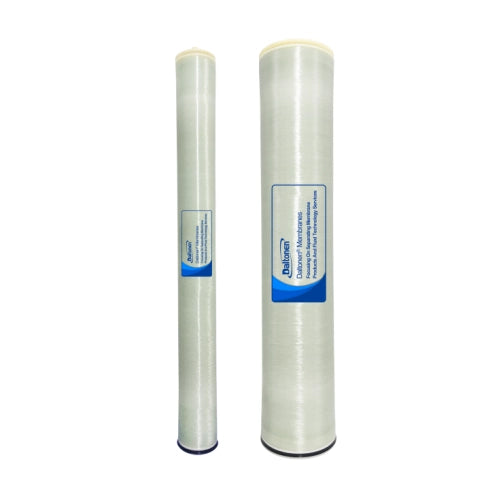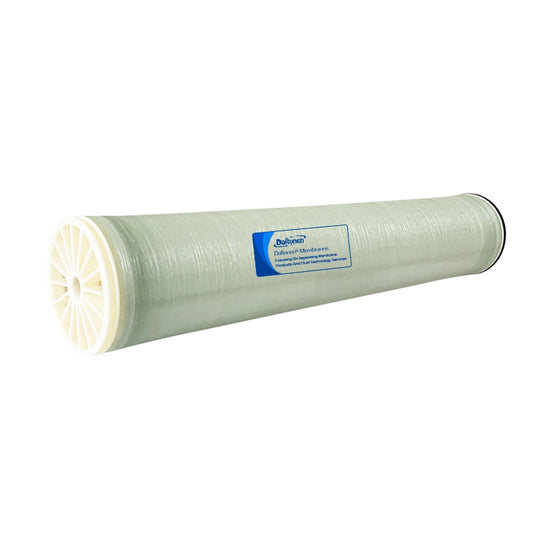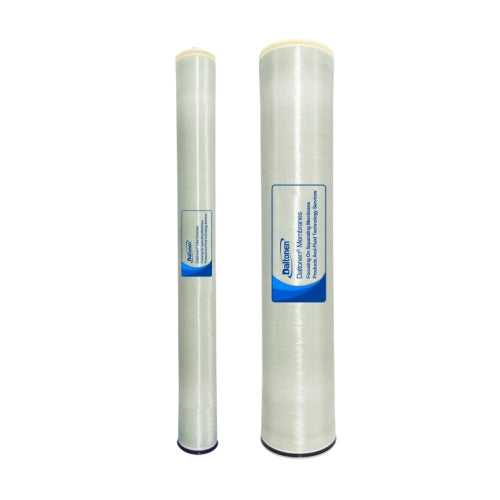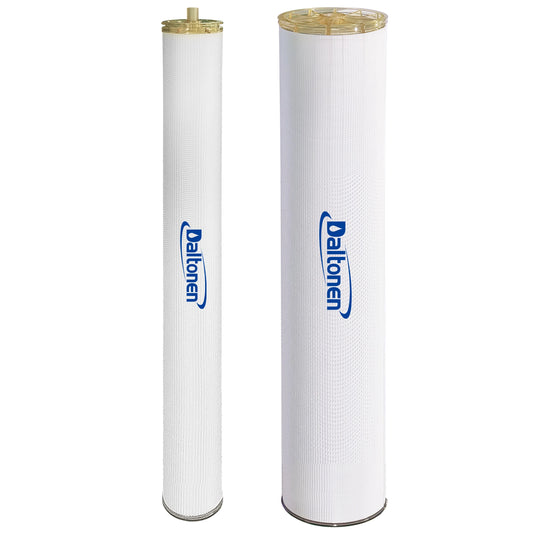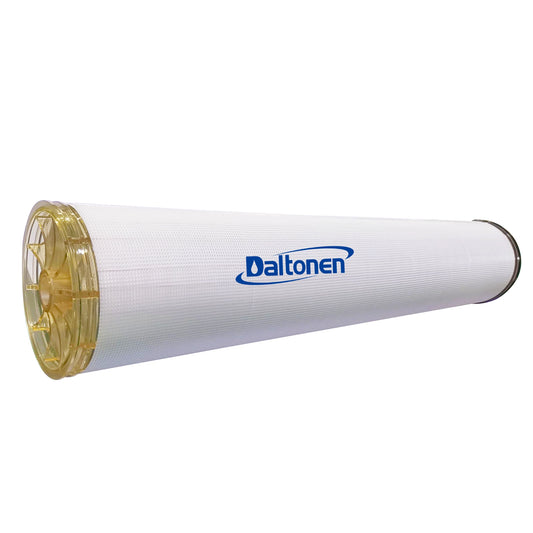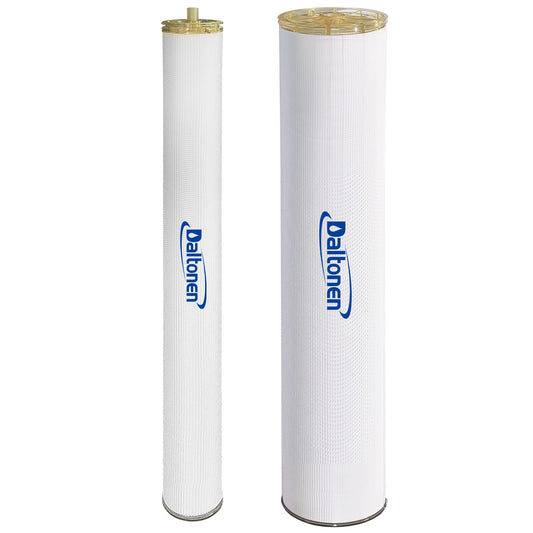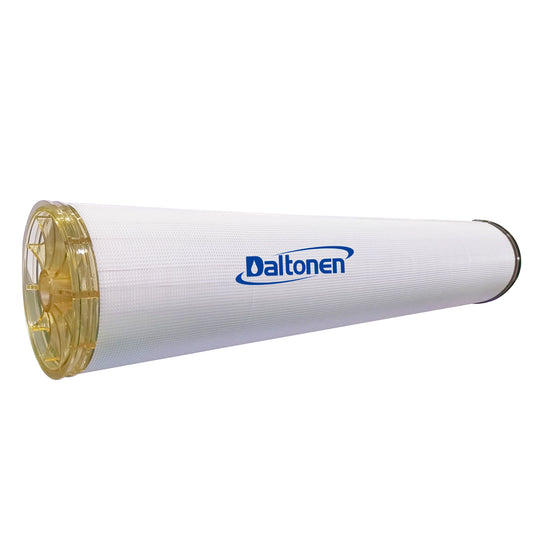NF Membrane Treatment Process Scheme for Pesticide Wastewater
20 May 2025
NF Membrane Treatment Process for Pesticide Wastewater Decolorization
Pretreatment Stage
Equalization Tank:
-
Adjust the wastewater pH to 6-8 (by adding H₂SO₄ or NaOH) to balance the fluctuation of water quality and avoid damage to the membrane caused by extreme pH.
-
If the wastewater contains oil or lipophilic components, add a dissolved air flotation unit (with PAC/PAM added) to remove floating oil.
Advanced Oxidation Treatment:
-
Fenton Oxidation (Fe²⁺ + H₂O₂) or Ozone Oxidation: Degrade large molecular organic compounds (such as aromatic pesticides) and reduce color (decolorization rate of 40-60%).
-
After oxidation, add NaHSO₃ to neutralize residual oxidants to prevent damage to the NF membrane.
Precision Filtration:
-
Use a 5μm security filter to remove small flocs and residual particulate matter generated after oxidation, ensuring the SDI15 of the feed water is ≤5.
-

NF Membrane Decolorization Stage
Membrane Component Selection:
-
Choose an organic solvent-resistant NF membrane (such as polyamide composite membrane or sulfonated polyethersulfone membrane) with a molecular weight cut-off of 200-500 Da, which prioritizes the interception of pigment molecules (such as azo groups, anthraquinone types).
-
Recommended models: NF270 (Dow), DL (GE), etc., suitable for high-color wastewater.
Operating Parameters:
-
Operating pressure: 0.8-1.5 MPa (adjusted according to the molecular weight of pollutants)
-
Recovery rate: 60-70% (permeate meets discharge standards or is reused, concentrate is further treated)
-
Temperature: 20-35℃ (to avoid membrane structural deformation caused by high temperature)
Decolorization Mechanism:
-
Pore Size Sieving: Intercept pigment molecules with a molecular weight >200 Da (such as pesticide intermediates, dye by-products).
-
Electrostatic Repulsion: The negative charge on the membrane surface repels negatively charged organic compounds (such as sulfonic acid group pigments).
Post-treatment and Resource Recovery
Permeate Deep Treatment:
-
If the permeate contains residual small molecular organic compounds (such as phenols), use activated carbon adsorption or biological filters for further purification.
-
After meeting the standards, reuse for production or discharge (color ≤50 times, COD ≤100 mg/L).
Concentrate Disposal:
-
Evaporative Crystallization: Recover high-concentration organic compounds (such as pesticide mother liquor) or salts.
-
Incineration Treatment: For highly toxic concentrates (such as those containing organochlorine pesticides), high-temperature decomposition of harmful substances.
System Maintenance
Chemical Cleaning:
-
Weekly cleaning with 0.1% NaOH + 0.5% EDTA solution for organic contamination;
-
Monthly cleaning with 1% citric acid for inorganic scaling (such as CaSO₄).
Membrane Lifespan: Under normal maintenance, the service life is 2-3 years, with a flux recovery rate of ≥85%.
Brief Scheme Design
Core Equipment Configuration
Pretreatment Unit: Equalization tank, Fenton reactor, security filter, neutralization dosing device
NF System: Pollution-resistant NF membrane components (such as NF270-400), high-pressure pump, automatic control system
Post-treatment Unit: Activated carbon adsorption tower, evaporative crystallizer
Monitoring System: Online colorimeter, COD detector, pH sensor
Expected Treatment Results
| Pollutant Indicator | Inlet Typical Value | NF Permeate Water Quality |
|---|---|---|
| Color (times) | 500-2000 | ≤50 (decolorization rate ≥90%) |
| COD (mg/L) | 2000-5000 | 300-800 (removal rate ≥80%) |
| Total Organic Carbon (TOC) | 800-1500 mg/L | ≤150 mg/L |
| Conductivity (μS/cm) | 2000-5000 | 1000-2000 (partial desalination) |
Technical Advantages and Considerations
Advantages
-
High-efficiency Decolorization: The interception rate for pigment molecules (molecular weight 200-1000 Da) is >90%.
-
Selective Separation: It is possible to recover some useful intermediates (such as aromatic compounds).
-
Modular Design: It adapts to the intermittent discharge characteristics of pesticide wastewater and allows flexible start and stop.
Considerations
-
Enhanced Pretreatment: It is necessary to reduce the toxicity of wastewater through oxidation or adsorption to avoid membrane pollution and biological toxicity.
-
Membrane Material Compatibility: Avoid wastewater containing strong polar solvents (such as DMF), which may cause membrane swelling.
-
Concentrate Disposal Cost: High-concentration organic concentrates require supporting incineration or advanced oxidation facilities, which have a higher investment.
Reference Cases
Treatment of a Certain Organophosphorus Pesticide Wastewater:
-
Original water color 1200 times, COD 4500 mg/L;
-
Using the "Fenton oxidation + NF (NF90 membrane)" process, the permeate color was reduced to 30 times, and the COD was 600 mg/L, which was reused in the cooling water system.
Pyrethroid Pesticide Wastewater:
-
The NF concentrate was recovered as NaCl through evaporative crystallization, reaching industrial grade purity.
Tags:
